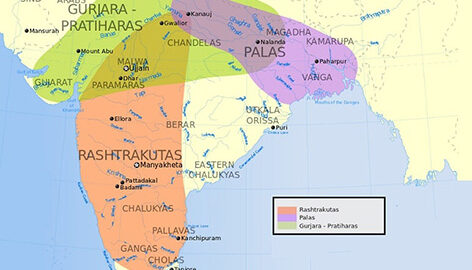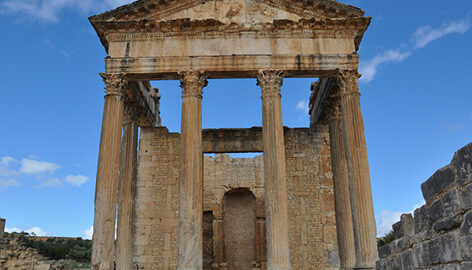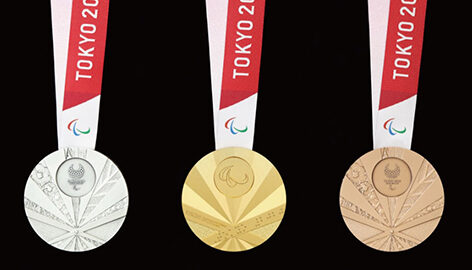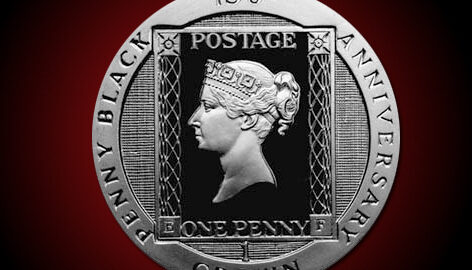

Many scholars and historians mark 600 BCE as the end of the ancient era and the start of the medieval period. This era also witnesses the rise of feudalism in India, which paves the way for the self-sufficient villages, and national and international trade. It was also the period when many strong and famous dynasties rose to power, one of them being the Rashtrakuta empire. The origin of Rashtrakuta is traced to 600 CE, they established their stronghold in Deccan in the later period and simultaneously extended their power till Kannauj, making them part of the famous tripartite struggle. This dynasty is the most studied and explored by historians for its warfare, expansion, administration and trade. Continue reading Rashtrakuta Coinage
The Mintage World Team comprises of experts, researchers and writers from the field of Philately, Notaphily and Numismatics who try to shed light on some of the most interesting aspects of coins, banknotes and stamps from not just India but across the globe as well.

The architectural and monumental coin-type of the second century AD are of considerable interest and importance to student of the architecture and topography of ancient Rome. No fewer than forty-five building and monument. Although the material culture of the Roman Empire is replete with illustrations of built structures, for centuries scholarship on architectural depictions has focused almost exclusively on particular issues of topography and reconstruction, rarely moving beyond such questions as “which building is depicted?”, So old Roman imperial coins is the most helpful way to understand the structure and recreate it to preserve them. Continue reading Old Roman Imperial Coins depicting Monuments
The Mintage World Team comprises of experts, researchers and writers from the field of Philately, Notaphily and Numismatics who try to shed light on some of the most interesting aspects of coins, banknotes and stamps from not just India but across the globe as well.

The presentation of monuments and buildings on ancient Roman coins is one of the most famous subjects in the study of coin iconography. In addition to numismatists, it has attracted the attention of historians, art historians, archaeologists, and topographers. Through Roman Coinage, we can see the consistent evolution of Roman architecture. Coin depicting Roman architecture is the most soughed after ancient coins around the world. Continue reading Ancient Roman Coins Depicting Monuments
The Mintage World Team comprises of experts, researchers and writers from the field of Philately, Notaphily and Numismatics who try to shed light on some of the most interesting aspects of coins, banknotes and stamps from not just India but across the globe as well.

Genesis of Paralympic Games:
The reason to begin Paralympic Games was to assist the large number of war veterans and civilians who had been injured during wartime. Continue reading Paralympic Games Journey of Indian Athletes through Coins
The Mintage World Team comprises of experts, researchers and writers from the field of Philately, Notaphily and Numismatics who try to shed light on some of the most interesting aspects of coins, banknotes and stamps from not just India but across the globe as well.

Compared to coins, postage stamps are a very modern invention. Since the first stamp of the world – Penny Black Stamp – postage stamps have long attracted the passion of collectors, including King Farouk of Egypt, Franklin D. Roosevelt, and John Lennon. Continue reading Commemorative Coins depicting Postage Stamps – Part I
The Mintage World Team comprises of experts, researchers and writers from the field of Philately, Notaphily and Numismatics who try to shed light on some of the most interesting aspects of coins, banknotes and stamps from not just India but across the globe as well.

Native Americans are also known as American Indians, First Americans, and Indigenous Americans. The ancestors of the Native Americans settled in the United States for 15,000 years. With time the culture, people and society got developed. To honour the Native Americans, the United States of America issued US commemorative coins under the banner U.S. Mint Native American 1 Dollar Commemorative Coins.
Continue reading U.S. Mint Native American 1 Dollar Commemorative Coins – Part II
The Mintage World Team comprises of experts, researchers and writers from the field of Philately, Notaphily and Numismatics who try to shed light on some of the most interesting aspects of coins, banknotes and stamps from not just India but across the globe as well.

The period of Republican in Rome saw the development in its monetary system later than the other empires around it. Before the introduction of coinage, Rome consists of two important forms of value in its economy Aes rude-an an irregular shaped piece of bronze and Aes signatum- cast flat bar made of bronze that needed to be weight in each transaction. Later on, heavy cast Bronze Roman coins called Aes Grave were introduced. The standard coin of the old Roman coins consist of AS and it was also the monetary unit. The start of the second Punic war also saw the introduction of the various small denomination like Unica, Semuncia, semis, Dupondius, Triens, sextans, quadrans, etc which were struck not cast also known as the early struck Roman Republican coinage. Continue reading Roman Republican Coinage: An overview
The Mintage World Team comprises of experts, researchers and writers from the field of Philately, Notaphily and Numismatics who try to shed light on some of the most interesting aspects of coins, banknotes and stamps from not just India but across the globe as well.

Ottoman Empire created by Turkish tribes in Anatolia (Asia Minor) that grew to be one of the most powerful states in the world. The Ottoman period spanned more than 600 years and came to an end only in 1922 when it was replaced by the Turkish Republic and various successor states in southeastern Europe and the Middle East. The term Ottoman is a dynastic appellation derived from Osman I (Arabic: ʿUthman), the nomadic Turkmen chief who founded both the dynasty and the empire about 1300. The original coinage of the Ottoman Empire consisted of small silver coins (akche, called asper by Europeans). Continue reading Coinage of the Ottoman Empire
The Mintage World Team comprises of experts, researchers and writers from the field of Philately, Notaphily and Numismatics who try to shed light on some of the most interesting aspects of coins, banknotes and stamps from not just India but across the globe as well.

Deities were common deception on the reverse of the Roman coins. These were used if an emperor wished to be associated with attributes of the particular gods and goddess. More often gods were used rather than goddesses. For example, if the emperor wanted to appear peaceful he could depict ‘Minerva Pacifiera’ as the ‘Bringer of peace’. Furthermore, the deities were depicted by the Emperors so they can use the image to suggest the gods approved of and support their reign or associate themselves with the divine as Julius Caesar did with his depiction of Goddesses Venus Continue reading Divinity: Goddesses on the Roman coins II
The Mintage World Team comprises of experts, researchers and writers from the field of Philately, Notaphily and Numismatics who try to shed light on some of the most interesting aspects of coins, banknotes and stamps from not just India but across the globe as well.

The canons of the Roman Goddesses are quite famous and powerful as their male counterpart. The pantheons of these goddesses are often associated with their Greek equivalents and it is often distinguished through there attires and attributes. Continue reading Divinity: Goddesses on the Roman coins
The Mintage World Team comprises of experts, researchers and writers from the field of Philately, Notaphily and Numismatics who try to shed light on some of the most interesting aspects of coins, banknotes and stamps from not just India but across the globe as well.